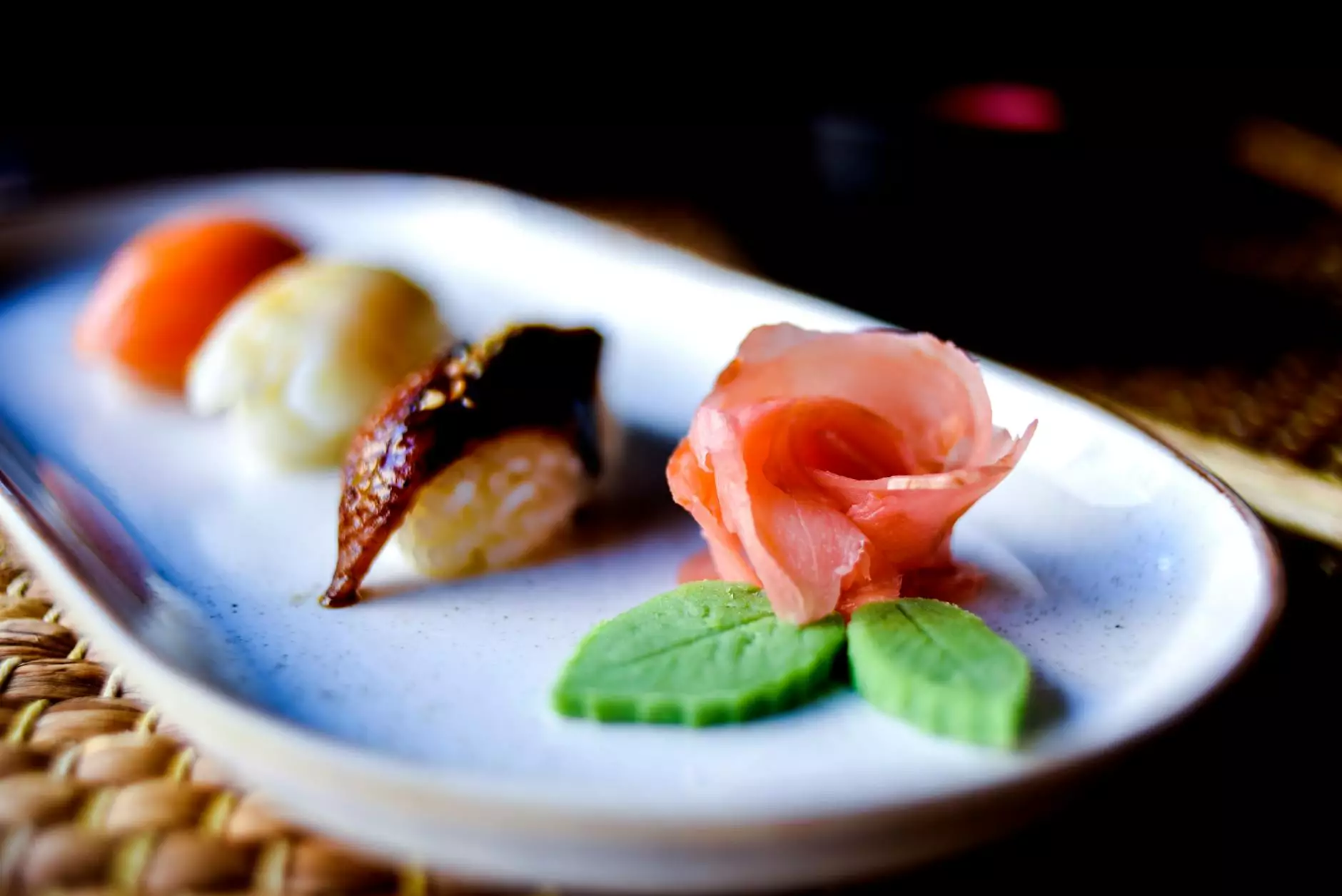The Marvelous World of Raw Wasabi

Raw wasabi, a plant native to Japan, is celebrated for its distinctive flavor and culinary applications. Though it is often mistaken for horseradish, true wasabi comes from the rhizome of the Wasabia japonica plant. Stemming from the traditional practices of Japanese cuisine, this ingredient is increasingly captivating food enthusiasts and chefs worldwide.
A Glimpse into the History of Wasabi
The history of raw wasabi is deeply tied to Japanese culture. Wasabi cultivation began over a thousand years ago in the clear, cold rivers of Japan. Historically used in sushi, sashimi, and as a condiment, it played a vital role in the preservation of fish due to its antibacterial properties. The Japanese have long celebrated this plant not only for its culinary uses but also for its health benefits, making it a unique staple in the region.
The Unique Flavor Profile of Raw Wasabi
The flavor of raw wasabi is unlike any other condiment. When freshly grated, it emits a sharp, pungent aroma that tantalizes the senses. Unlike the intense heat of chili peppers, wasabi offers a gentle warmth that enlivens dishes without overwhelming the palate. The heat from wasabi is transient, quickly dissipating, allowing you to enjoy the underlying flavors of the foods it accompanies.
What Makes Wasabi Unique?
- Natural Heat: The compounds in wasabi, known as isothiocyanates, are responsible for its heat but act differently than capsaicin found in chili peppers.
- Flavor Complexity: Raw wasabi lends a complex flavor, with hints of sweetness and earthiness that can enhance a wide variety of dishes.
- Freshness Factor: The freshness of wasabi dramatically affects its flavor. The best experience comes from freshly grated wasabi, typically made immediately before service.
Health Benefits of Raw Wasabi
Beyond its delightful taste, raw wasabi is noted for several health benefits:
Rich in Nutrients
Wasabi is low in calories yet rich in essential nutrients. It contains significant amounts of vitamin C, which is a powerful antioxidant, and other essential minerals like potassium and magnesium that are vital for maintaining various bodily functions.
Antimicrobial Properties
Research indicates that wasabi contains antimicrobial properties, which can help protect against foodborne illnesses. The isothiocyanates in wasabi inhibit the growth of certain bacteria, making it an excellent addition to fish dishes.
Potential Cancer-Fighting Properties
Some studies suggest that wasabi's bioactive compounds may play a role in cancer prevention. While research is still ongoing, the potential of isothiocyanates to fight tumor growth is an exciting avenue of investigation.
Using Raw Wasabi in Culinary Arts
The versatility of raw wasabi makes it an essential ingredient in many restaurants and sushi bars. Here are some ways that this incredible ingredient can be utilized in cooking:
Classic Sushi and Sashimi
In traditional sushi practices, raw wasabi is served alongside fresh fish. It is often mixed with soy sauce to create a distinctive dipping sauce meant to enhance sushi flavors without overpowering them. The careful balance of flavors in sushi is perfectly suited to the fresh taste of wasabi.
Creative Sauces and Dressings
Chefs are blending raw wasabi into various sauces and dressings, providing a new twist on classic recipes. Wasabi vinaigrettes and aioli can elevate salads, grilled meats, and seafood dishes.
Enhancing Marinades
Add a spike of heat and flavor to marinades using raw wasabi. Marinate your proteins, including chicken, seafood, or vegetables, to infuse them with an exquisite zing that will excite your diners' taste buds.
Understanding the Cultivation of Raw Wasabi
The cultivation of wasabi is a meticulous process, requiring specific conditions to thrive. Here’s what you should know:
Ideal Growing Conditions
- Cool Temperatures: Wasabi prefers shaded areas with cool temperatures, typically ranging between 10°C to 20°C (50°F to 68°F).
- Clean Water: The plant naturally grows in freshwater streams, requiring constant and clean water flow to survive.
- Rich Soil: The best wasabi is grown in nutrient-rich, loamy soil, which helps to promote healthy growth and robust flavor.
Harvesting Raw Wasabi
Harvesting wasabi is a labor-intensive process that takes about 2-3 years for a mature rhizome. Farmers must carefully dig around the plant to prevent damage and preserve its unique flavor profile. Proper handling during harvesting is crucial to ensure that the wasabi maintains its delicious characteristics.
Raw Wasabi in Global Cuisines
While predominantly known in Japanese cuisine, raw wasabi is making waves in international culinary practices. Chefs around the world are exploring its potential in various cuisines:
Western Cuisine
In Western culinary arts, wasabi is being incorporated into dishes such as wasabi mashed potatoes or wasabi-infused sauces, complimenting modern gastronomy trends. Its spicy nuance provides depth and different flavor dimensions, making it a sought-after ingredient in fine dining.
Fusion Cuisine
Fusion cuisine blurs the lines between various cultures, and wasabi is often featured in innovative ways. From wasabi guacamole to wasabi-infused burgers, culinary creatives are reimagining established recipes with this extraordinary ingredient.
Where to Find Fresh Raw Wasabi
Fresh raw wasabi can be sourced from specialty grocery stores or online retailers that focus on authentic Japanese ingredients. High-end sushi bars and restaurants usually source fresh wasabi directly from suppliers to ensure quality and freshness.
Conclusion: Embrace the Flavor of Raw Wasabi
Raw wasabi is more than just a condiment; it is a culinary experience that brings enthusiasm to the table. Its rich history, unique flavor profile, and health benefits make it an essential addition to Japanese cuisine and beyond. As consumers increasingly seek authentic flavors and experiences, raw wasabi stands out as an ingredient that leaves a lasting impression.
In your next culinary adventure, whether experimenting in your home kitchen or dining out in one of the best sushi bars, don’t forget to embrace the extraordinary potential of raw wasabi. The depth, aroma, and flavor this ingredient brings to various dishes could open up a whole new world of taste sensations!








